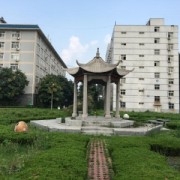初中英语语法点总结,初中英语语法大全
来源:江南官网app下载 时间:2023-07-24

初中英语的语法知识相对来说比较简单,是语法的入门基础,在学习初中英语语法的时候一定要认真,打基础就是从这个时候开始。对于语法的一些重点内容要灵活运用,不但要答题准确,而且要学会自己用语法知识去造句。今天专注教育下班就把我的压箱底拿出来,初中英语语法点总结:
(一)
一.词类(Parts of Speech)
名词英文名称The Noun(缩写为n.) 表示人或事物的名称例词boy,clock,book等
冠词英文名称The Article(缩写为art.) 用在名词前帮助说明名词所指的人和或事物。例词a(an),the
代词英文名称The Pronoun(缩写为pron) 用来代替名词、形容词或是数词例词we,that,his,what
形容词英文名称The Adjective(缩写为adj.) 用以修饰名词,表示人或事物的特征
例词old,red,fine,good.
数词英文名称The Numeral(缩写为num.) 表示数量或是顺序。例词one,thirteen first
动词英文名称The Verb(缩写为v.) 表示动作或状态。例词sit,go,be(am,is,are)
副词英文名称The Adverb(缩写为adv.) 修饰动词、形容词或其他副词。例词not too,here,very
介词英文单词The Preposition(缩写为prep.) 表示名词、代词等和句中其他词的关系。例词in,on,of,to,under. 连词英文单词The Conjunction(缩写为conj.) 用来连接词与词、短语与短语或句与句。例词and,or,but.
感叹词英文单词The Interjection(缩写为interj.) 表示说话时的喜悦、惊讶等情感。例词oh,hello,hi,er.
二.名词(Nouns)
1.总的说来,名词分专有名词和普通名词两类。
专有名词: 表示具体的人,事物,地点或机构的专有名称。
Lucy China 中国Asia 亚洲Beijing北京。
专有名词的第一个字母要大写。
普通名词: 表示某些人,某类事物,某种物质或抽象概念的名称。例如:
teacher 老师tea 茶reform改革
普通名词又可进一步分为四类
1) 个体名称: 表示单个的人和事物。
house 马car 汽车room 房间apple 苹果fun 风扇picture照片
2) 集体名称: 表示一群人或一些事物的名称。
people 人们family 家庭army军队government *group 集团
3) 物质名词:表示物质或不具备确定形状和大小的个体的物质。
fire 火steel 钢air 空气water 水milk 牛奶
4)抽象名词:表示动作,状态,品质或其他抽象概念。
labour 劳动health 健康life生活friendship友情patience耐力
2.名词按其所表现的事物的性质分为可数名词和不可数名词。
可数名词(Countable Nouns)有复数形式,如:
an apple two apples a car some cars
不可数名词(Uncountable Nouns)一般没有复数形式.
抽象名词, 物质名词和专有名词一般是不可数名词。
sand 沙sugar 糖
有少数名词即可作可数名词,也可作不可数名词,但含义不同。
glass 玻璃glass 玻璃杯paper纸paper 报纸,文件
名词的功能
名词在句中作主语, 宾语,介词宾语,宾语补助语,表语以及名词短语作状语。
The bag is in the desk. bag 作主语。
书包在桌子里边。
1
I washed my clothes yesterday. clothes 作宾语。
昨天我洗了我的衣服。
This is a good book. book 作表语。
这是一本好书。
We elected him our monitor. monitor作宾语补助语。
我们选他为我们的班长。
Mary lives with her parents. parents作介词宾语.
玛丽和她的父母亲住在一起。
He is a Party member. Party 作定语.
他是一名党员。
They study hard day and night. day and night作状语。
他们白天黑夜地学习。
3.可数名词有单数(the Singular Nunmber)和复数(the Plural Number)两种形式。名词的复数形式(The PluralForm Nouns)的部分规则如下:
1) 一般情况下,在词尾加-s.例如:
bags,maps,pens,desks,workers
2) 以s,sh,ch,x等结尾的词加-es.
例如: buses watches boxes
3) 以ce,se,ze,(d)ge等结尾的词加-s.
例如: licences blouses oranges
4) 以辅音字母+y结尾的词变y为i再加-es.
例如: babies families
5) 名词以-f 或-fe 结尾的,把-f 或-fe 变成-ves.
bookshelves,wives,knives
注:英语中有些名词的复数形式是不规则的,需要一一记忆常见的有,
man - men woman - women foot - feet
tooth - teeth mouse - nice ox - oxen
sheep - sheep dear - dear fish - fish
英语中有些名词总是以复数形式出现。
scissors 剪刀goods 货物trousers裤子clothes 衣服glasses 玻璃杯
4.名词的所有格(The Possessive Case of Nouns)
在英语中,名词的格有三个,主格,宾格和所有格。
它们的形式及其变化表示与其他词的关系。
实际上, 主格和宾格通过它在句中的作用和位置来确定。
The bird is in the tree. 鸟在树上。bird 作主语, 是主格。
I saw a film yesterday. 昨天我看了一场电影。film作宾语,是宾格。
名词的所有格: 名词中表示所有关系的形式叫做名词所有格。
Lu Xun's book is worth reading.
鲁迅的书值得一读。
This is my father's room.
这是我父亲的房间。
名词所有格的构成
单数名词加's 例词:Mike's father
以s结尾的复数名词加' 例词:the teachers' room
不以s结尾的复数名词加's 例词:men'swomen's
三、代词(Pronouns)
1.人称代词(Personal Pronouns)
第一人称单数主格I(复数We) 单数宾格me(复数us)
第二人称单数主格you(复数you) 单数宾格you(复数you)
第三人称单数主格he,she,it(复数they) 单数宾格him,her,it(复数them) 2.物主代词(Possessive Pronouns)
形容词性物主代词第一人称单数my(复数our)
形容词性物主代词第二人称单数your(复数your)
形容词性物主代词第三人称单数his,her,its(复数their)
名词性物主代词第一人称单数mine(复述ours)
名词性物主代词第二人称单数yours(复数yours)
名词性物主代词第三人称单数his,hers,its(复数theirs)
四、数词(Numeral)
表示数目多少或顺序多少的词叫数词,数词分为基数词和序数词。
表示数目多少的数词叫基数词;表示顺序的数词叫序数词。
基数词(Cardinal Numbers)
1 one
2 two 3three 4four 5five 6six
11eleven 12twelve 13thirteen 20twenty
21twenty-one 40fouty 100one hundred
五、动词(Verb)
一般现在时(The Simple Present Tense)
一般现在时表示现在的状态
如:Heis twelve.She is at home.
表示经常的或是习惯性的动作.
如:Igo to school at 7:30 every day.
表示主语具备的的性格和能力等
如:Shelike apple.They know English.
1.动词be(Verb to be)
肯定式I am......否定I am not....
肯定式You are...否定式You are not....
肯定式He/She/It is....否定式He/She/It is not....
疑问句和简略答语
Am I ....?
Yes,you are.,I you are not.
Are you....?
Yes,I am.,I am not.
2.There be结构
"There is/are+某物/某人+某地/某时"这样一种句型,大致相当于汉语"某地/某时有某物/某人"的说法.句子的is/are和后面所跟的名词在数方面必须是一致.
肯定式:There is(There's)a table in your room.
There are(There're)some pencils on the desk.
否定式:There is not(There isn't)any cats here.
There are not(aren't)any cats here.
疑问式和简略答语
Is there a ruler in your bag?
Yes,there is.,there is not(isn't).
Are there any people in that house?
Yes,there are.,there are not(aren't).
How many kites are there in the sky?
There are thirteen.
六、介词(Prepositions)
介词一般用于名词或代词前,表示该词与句子其他成分的关系.介词后面的名词或代词称为介词宾语.介词和介词宾语一起构成介词短语.
本册课本出现的介词短语如下:
at: at home at school at six thirty
behind: behind the door/tree behind one's chair
beside: beside the door beside the house
from: from one to a hundred
in: in Row/Team/Class/Grade4
in one's school/grade/class/team/rom
in your desk/pencil-box/bedroom
in the picture in the same class in different classes
in English in the hat in the morning/afternoon
like: like this/that
near: near the window near the door
of: a picture of a classroom a map of China
the name of her cat the wall of their classroon
on: on the desk/chair on the floor on the wall on the bike
on the duty
to:(a quarter)to ten (go)to school/bed/work
under: under the desk/table under the tree/window under one's chair/bed(1)表示时间:
at: 表示某一时间点
如:atnoon
on: 表示特定的日子
如:onChristmas
in: 表示一段不具体的时间
如:inthe morning,in the Second world war
如表示在某一特定的早上、下午则用on
如:ona cold morning, on a hot afternoon, on Sunday morning
during: 表示期间内的某个时期
如:during the night, during the Second World War
for: 其后接表示一段时间长度的词
如:forthree days
through: 表示在整个期间没有间歇
例:Itsnowed through the night.
till/until: 表示动作持续的终点
例:Istudied hard till twelve o'clock last night.
by: 表示动作完成期限
例:I'llbe back by five o'clock.
since: 表示某动作的起始点
例:Ihave studied English since 1990.
(2) 表示地点:
at: 表示较小的地点
如:arrivedat the school gate
in: 表示较大的地点
如:arrivedin Shanghai
for: 表示目的地
例:I'llleave for Shanghai.
above: 表示上面,上方,其反意词是below
over: 表示垂直上方,其反意词是under
例:Thedog jumped over the table.
through: 表示穿过
如:throughthe forest
across: 表示平原上的跨越
例:Iwant to walk across the road.
七、句子的种类(Kinds of Sentences)
英语的句子按照用途可分为以下四类:
陈述句用途是用来说明事实或说话人的看法例句:I can see a map on the wall.
I think it's his.
疑问句用途是用来提出问题. 例句:Are you Mr Green?
Can you find it ? How old are you?
祈使句用途是用来表示请求和命令. 例句: Sstand up.Come in,please.
Let's play games.
感叹句用途是用来表达强烈的感情. 例句:What a fine day it is!
How beautiful the flowers are!
八、一般疑问句和特殊疑问句
一般疑问句子和特殊疑问句
一般疑问句(General Question)一般是指用Yes或No回答的疑问句。
例如:Is she at school today? Yes,she is,she isn't.
Can you see a pencile on the desk? Yes,I can.,I can't.
Do you play football? Yes,they do.,they don't.
特殊疑问句是以特殊疑问词开头的疑问句.
(二)
一.形容词和副词的比较级和最高级
(The Comparative and Superlative Degrees of Adjective and Adverbs)
以上就是江南官网app下载 为大家带来的初中英语语法点总结,初中英语语法大全,希望能帮助到广大考生!







